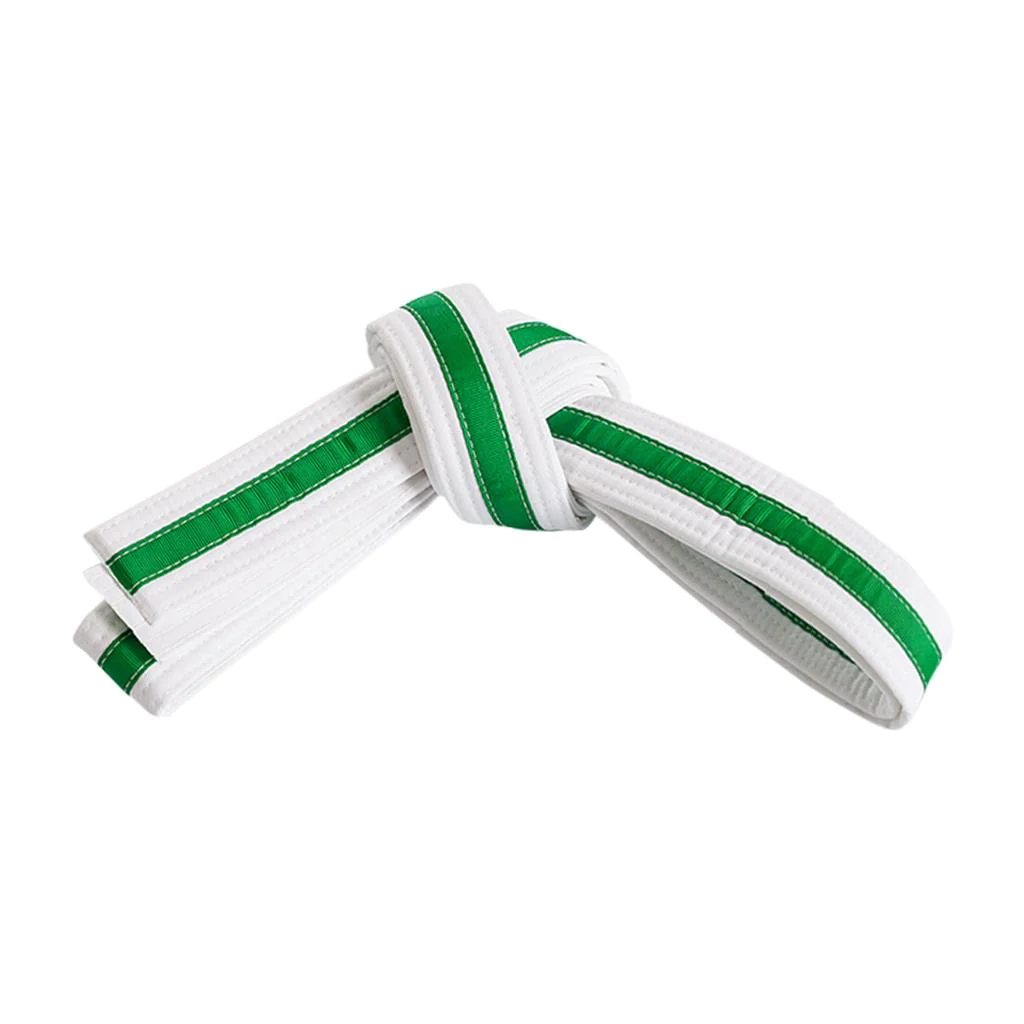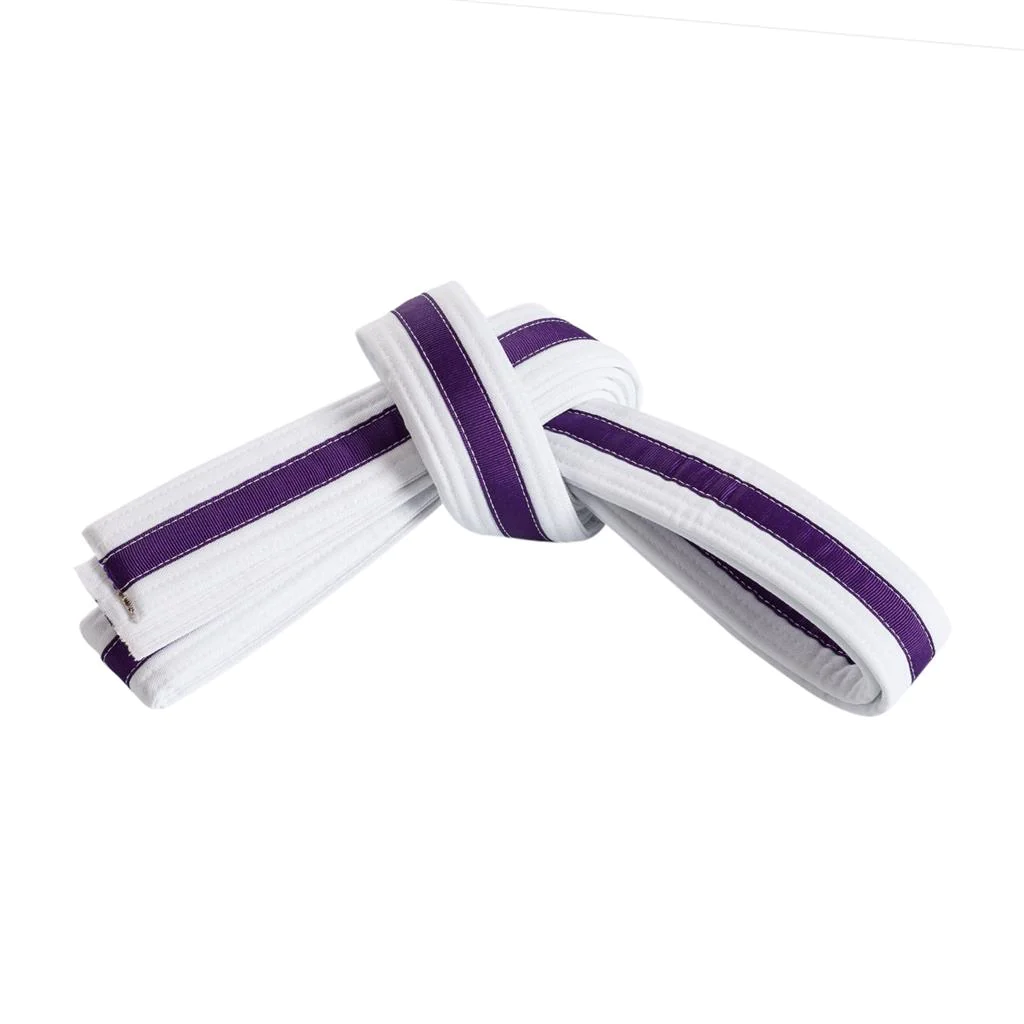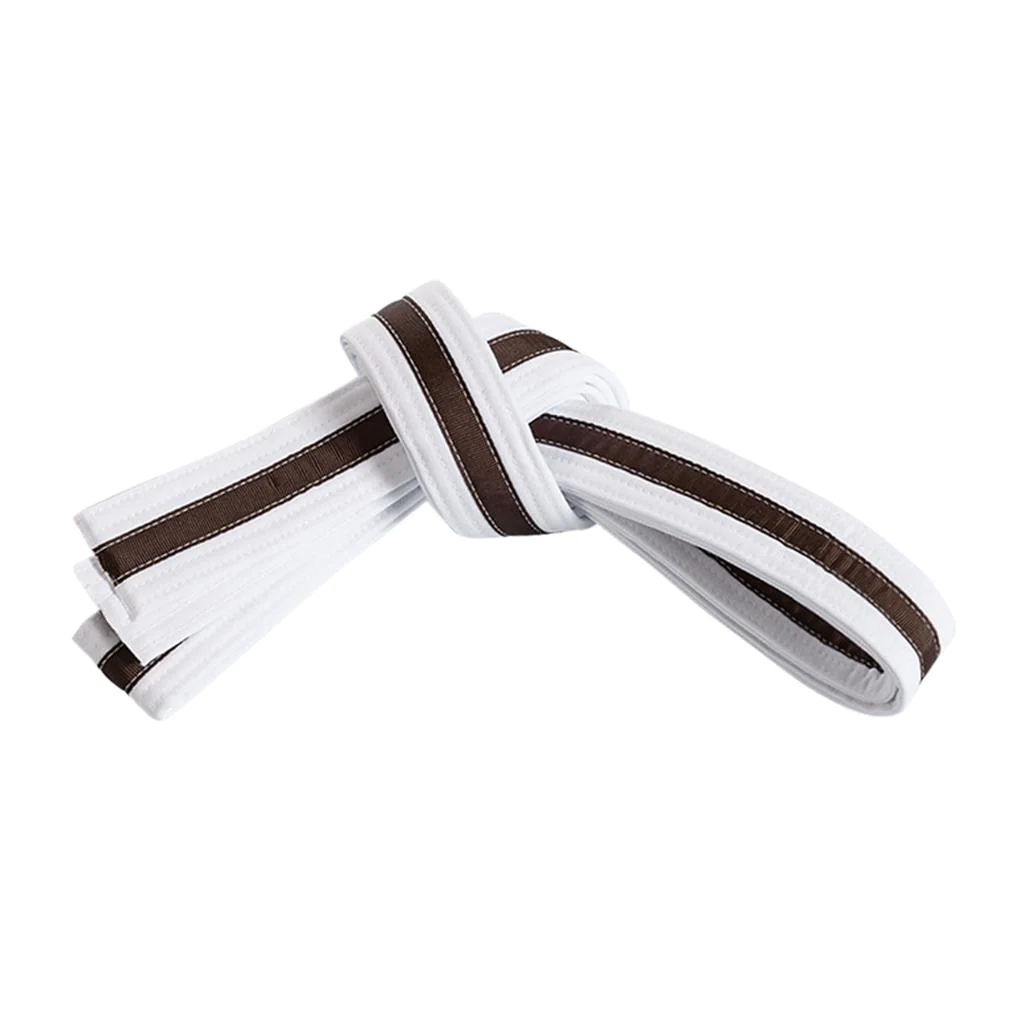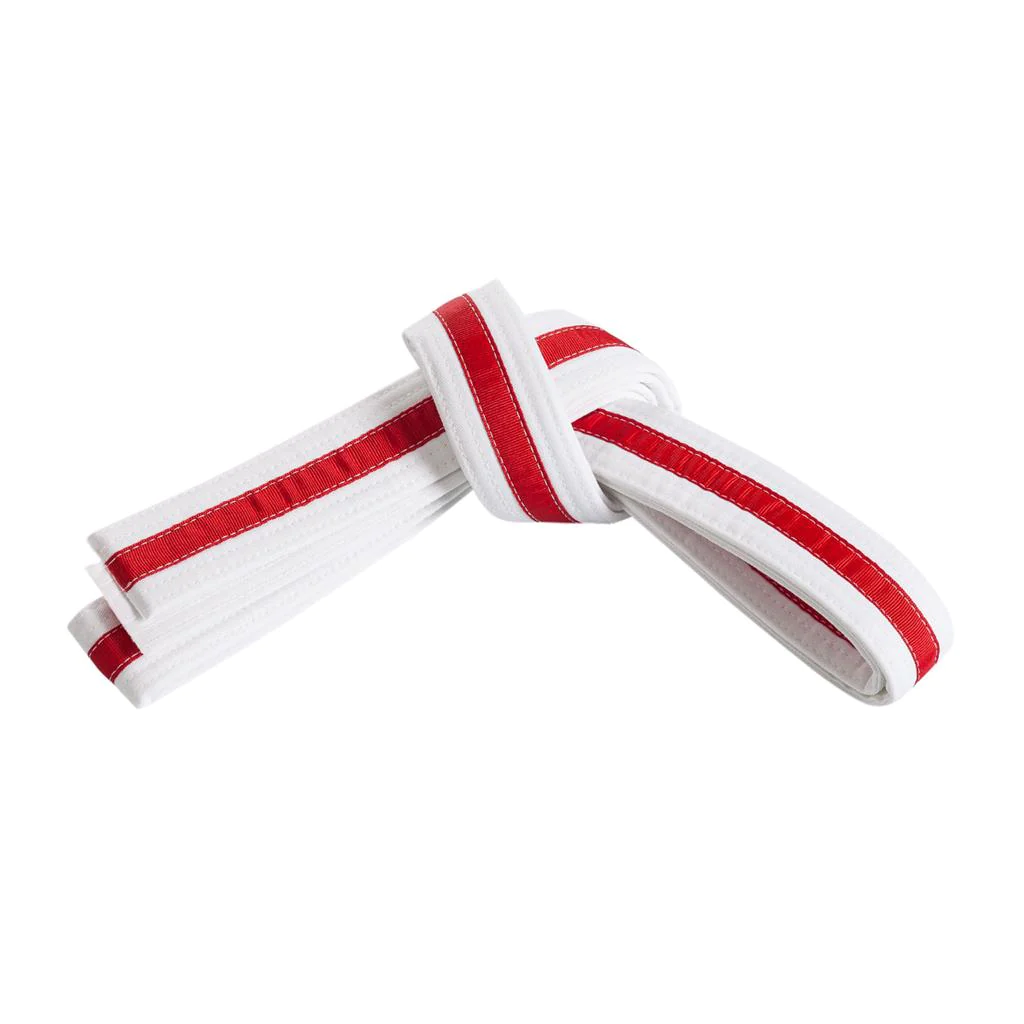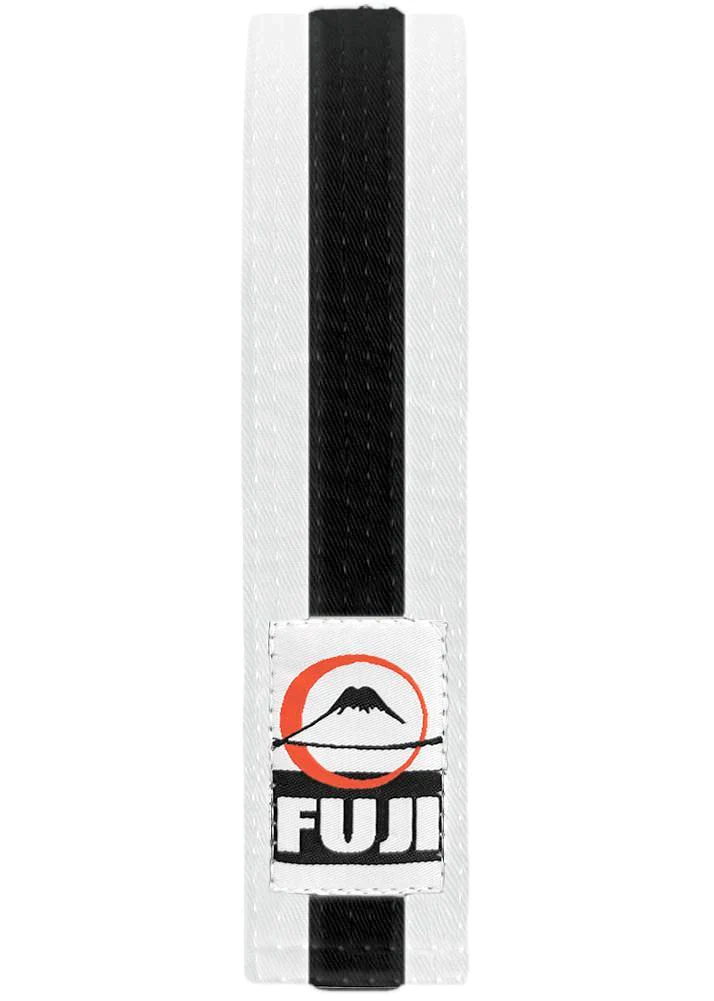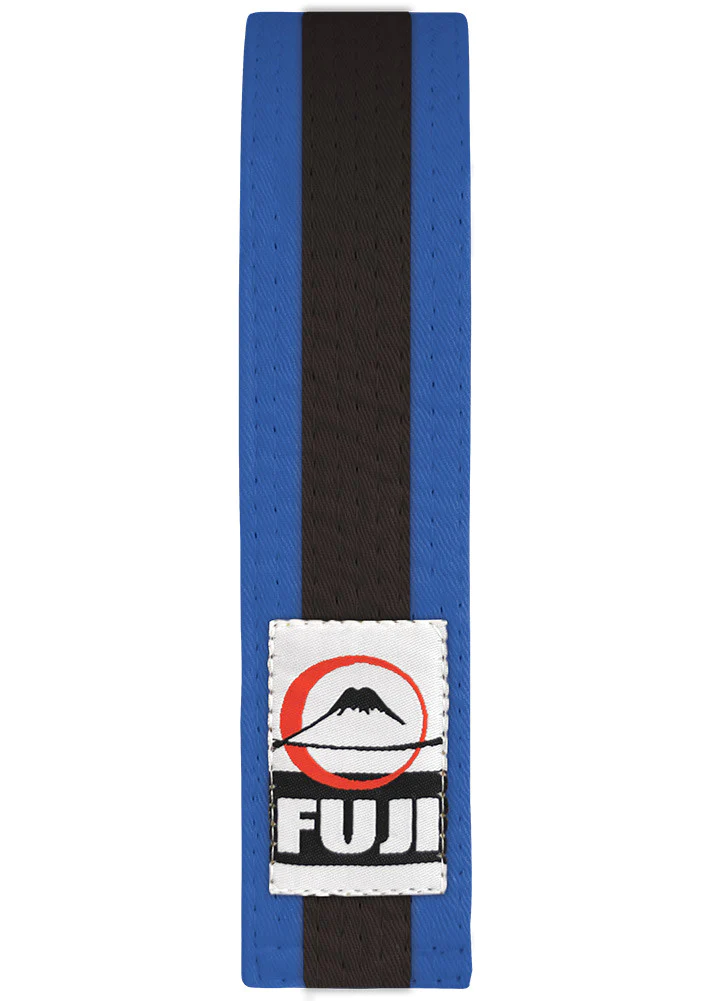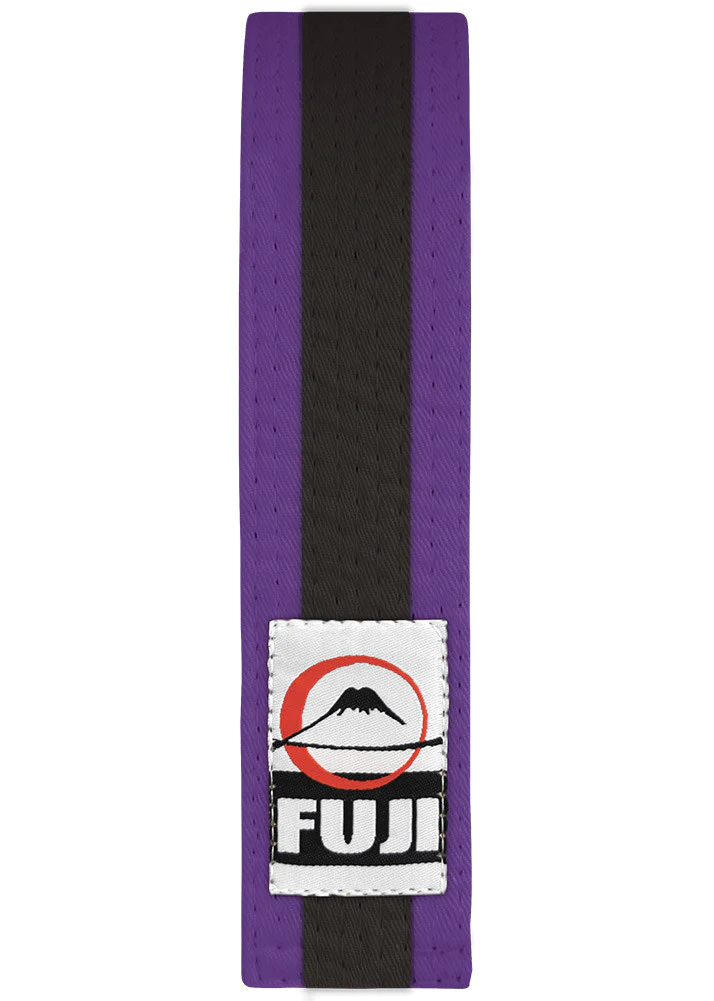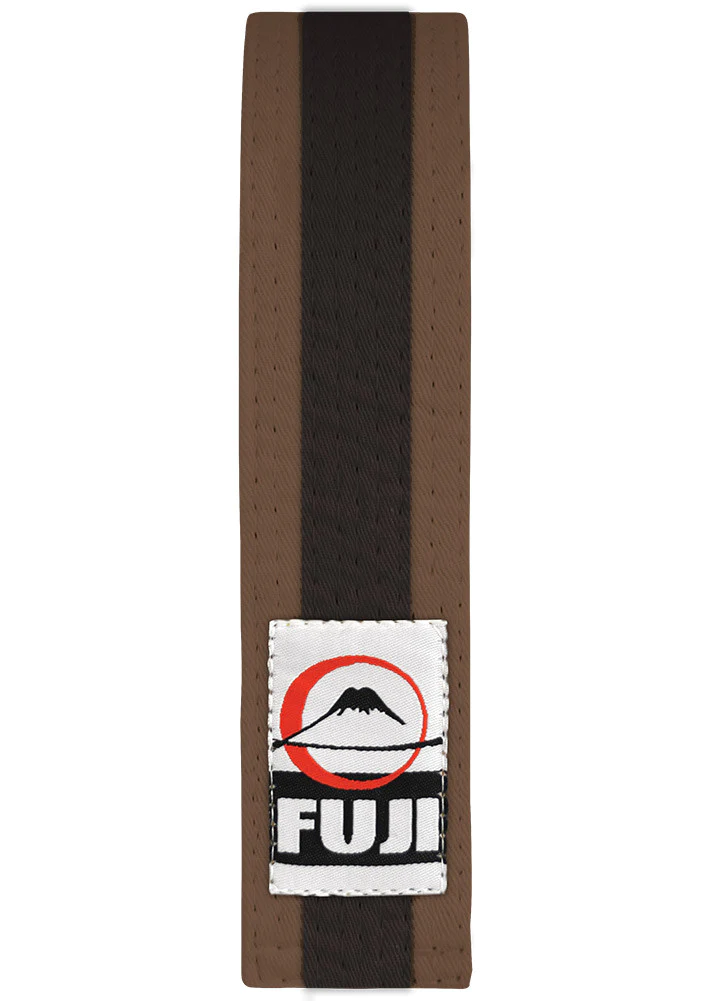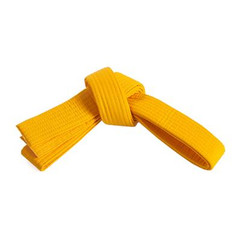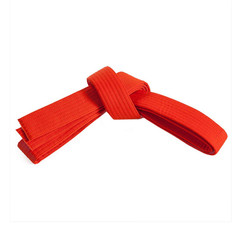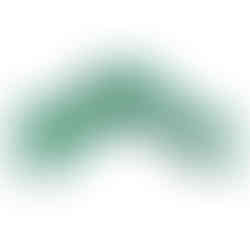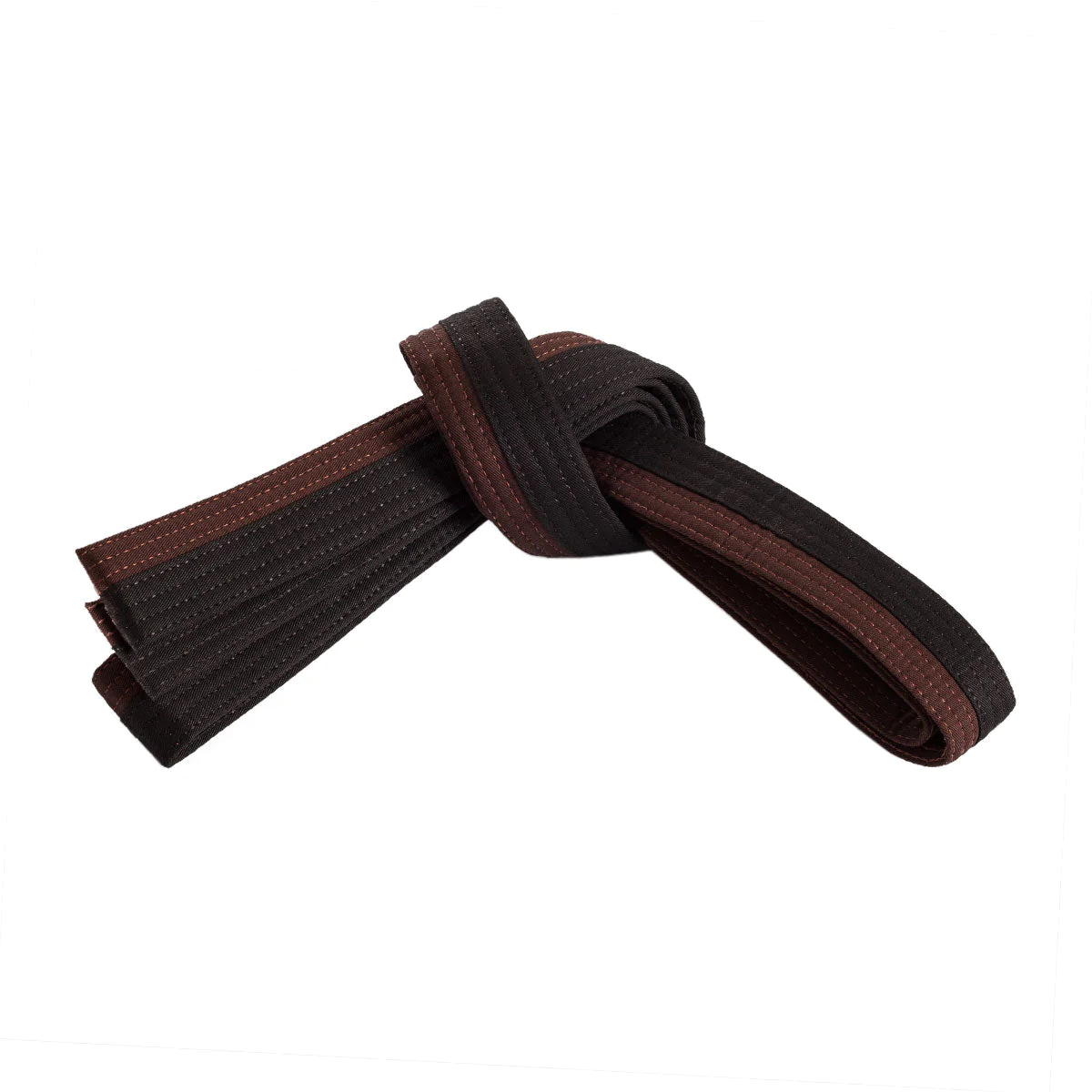In this mega-sized article, I'm going to be detailing our classes' different belt systems, the names of each belt, the requirements to attain each belt, and the general amount of time it should take to reach each new belt.
Which belt will your child get upon aging into an older class group?
But my child has reached the minimum attendance requirement! Why hasn't she graded yet??
How long until I get my black belt?
How old do I have to be before I get my black belt??
Answers to all of your most burning questions can be found at the bottom of the article, past all of the image galleries.

Little Ninjas
Ages 3-5
"Little Ninja" belts are white belts with coloured stripes down the centre, and are achieved as ordered below:
Yellow: Bumble Bee
Orange: Chipmunk
Green: Grasshopper
Blue: Dolphin
Purple: Frog
Red: Panda Brown: Bear
Black: Panther**
**Let's be super clear here. Black Panther belt is not a "black belt". Full black belts require a minimum age of 18, multiple katas (patterns) and an adult level of coordination. While Black Panther is the highest level of Ninja belt and is an awesome achievement that not many kids get, it is not a 'black belt' in karate.
Belt Requirements:
All Ninjas graduate with a group of peers at the end of a 3 or 4-month period. There is no test involved, but instead, a demonstration of basic skills, listening and coordination learned. However, with parents' approval, graduations may be withheld if the child is acting in a way the parents don't wish to reward on a regular basis at home or in karate.
Aging Up
If your child has any Little Ninjas belt, good news: they will not have to go back to white belt upon joining the older class group! Ninjas turning 6 and joining the older group will keep their Ninja belt until they are invited to a grading, a sort of test, to achieve their Yellow Tiger belt in Little Dragons.
Ninja Belts;
Little Dragons
Kids Ages 6-8 (roughly).
"Little Dragon" belts are coloured belts with black stripes down the middle.
Belt Requirements:
Unlike solid 'adult' level belts, which are started around age 9, Dragon belts do not require kata or advanced knowledge. Instead, we focus on building blocks of listening, focus, behaviour, manners, and karate technique. With each level of belt achieved, the student is held to a higher standard of behaviour and technique. With an average attendance of 2 nights per week, a yellow belt can expect roughly 3 months between grading, and time between tests gets slightly longer as your belt colour gets higher in rank.
Aging Up:
When your child turns 9 and ages up into the youth class, he or she will keep their Little Dragon striped belt until such time as they have learned the required kata and knowledge to test into the youth and adult belt system (Also called the Kyu Belts). Depending on the age, skill level, and your Sensei's judgement, upon your next grading after joining the youth class, you may test to solid yellow, orange, or even green belt.
Little Dragon belts by name:
Yellow: Tiger
Orange: Lion
Green: Turtue
Blue: Shark
Purple Dragon
Red Dragon
Brown Dragon
Golden Dragon (black with a yellow stripe through it)**
** Much like Ninjas "Black Panther" belt, it's important to note that Golden Dragon, while looking very 'black', is not a "karate black belt" for the same reasons the Ninjas Black Panther is not a black belt. See the bottom of this article for more reasons on this. Golden Dragon is an awesome achievement! But it isn't a black belt.
Dragons Belts:
KYU Belts Youth and Adult (up to brown belt)
Ages 9+
Youth and adult belts are identical up to the point of brown belts. However: the requirements for a 9-year-old grading to, for example, green belt, are going to be different from an adult doing the same. Grading requirements for adults are more rigorous, require more knowledge, and ask for things like bunkai and more advanced skill than could be expected of a child.
What is KYU?
Kyu, pronounced like this, is a Japanese word meaning "rank", "class", or "level". These are the numbered and official adult belt ranks used across the world for TOGKF students usually aged 9+, though the ages for Kyu belts vary depending on the dojo and country.
Aging Up:
If your child is aged 9-12 and ages up into the adult class, he will keep his belt and continue testing for the same belts listed below. However, in our adult class, we have two distinct lines: the adult line of white through black belts will stand in front of the teen's line of white through black belts. Meaning: a 13-year-old brown belt will stand behind an adult white belt. This is a very Japanese way of respecting the age of the senior students.
Upon turning 18 they will take their place in the adult line appropriate to their rank.
Belt Requirements
Requirements for Kyu belts are much more strict than for previous systems.
10th Kyu (Yellow/White Belt)
To achieve this belt:
Techniques: basic knowledge of three blocks, three punches, front kick, roundhouse kick, knee kick and side kick
Kata/Bunkai: None required
Minimum Time: Three months or 16 classes. Please note this is the MINIMUM time, not maximum.
9th Kyu (Yellow Belt)
8th Kyu (Orange Belt)
7th Kyu (Green Belt)
6th Kyu (Blue Belt)
5th Kyu (Purple Belt)
4th Kyu (Purple/Brown Belt)
3rd Kyu (brown belt)
2nd Kyu (Brown/Black with White Tip)
1st Kyu (brown/black, remove white tip)
Black Belts
Congrats! You're ready to grade for black belt! Amazing.
While a true "Shodan" black belt is an internationally recognized rank, and can only be achieved by a student aged 18+, we are aware that some kids train from the time they are small, and may hit all of the milestones for black belt prior to age 18. Because of this, there are multiple sorts of black belt to aim for.
Keep in mind: a full adult Black Belt in Goju Ryu Karate can only be given to someone aged 18+. Some students, older teens especially, chose to stay 1st Kyu (see above), skip the teen and kids levels of black belts, and wait for adult Shodan instead. This may actually be a faster way to achieve adult Shodan. Please discuss with Sensei if this is what you want to do.
Here is a list of all the black belts someone may achieve.
Please keep in mind: the look of these belts may change depending on what is available from our suppliers. No matter what your belt looks like, your rank will be the same.
Kakyu Ichi, Kids Black, aged 10-12

Kakyu 1 (ichi), also known as "Kids black", is a black belt awarded to children aged 10-12.
Kakyu 1 can only be expected to be earned by kids who have trained since age 3-6, and have trained through all of Ninjas, Little Dragons and youth belt ranks. Children who start karate later in life, aged 7-8, will probably not get to Kakyu Ichi, which is fine! Instead, they will jump to the belts listed below:
This belt will be yours for a minimum of one year, or until you reach the age for the next black belt in the list. If you achieve this belt at age 10, you will keep it until you turn 13. If you reach this belt at age 12.5, you keep it until you are 13.5 years old.
Kakyu Ni, Jr. Teen Black, aged 13-15

Kakyu 2 (ni), also known as "Jr. Teen Black", is a black belt awarded to children aged 13-15.
Kakyu 2 can be expected to be earned by kids who began karate around aged 7-9 and have trained with no extended breaks.
This belt will be yours for a minimum of one year, or until you reach the minimum age for the next black belt in the list. If you achieve this belt at age 13, you will keep it until you are 16. If you reach this belt at age 15.5, you keep it until you are 16.5 years old.
Kakyu San, Sr. Teen Black, Aged 16-17

Kakyu 3 (San), "Sr. Teen Black Belt", is a black belt for older teens, from ages 16-17.
Kakyu 3 can be expected by anyone who began training from age 10-12 and beyond and haven't taken any extended breaks.
This belt will be yours for a minimum of one year, or until you reach the minimum age for the next black belt in the list. If you achieve this belt at age 16, you will keep it until you are 18. If you reach this belt at age 17.5, you keep it until you are 18.5 years old. This is why, if you are aged 17+, it is sometimes better to wait until your 18th birthday. This way, you can grade for adult black belt sooner, as you won't have to wait out the remainder of your 12 months as a Sr. Teen Black Belt.
The 10 Adult Black Belts: Dan ranks.

Did you know: there are ten levels of black belt in our style of karate?
Ten!! They are: Shodan, Nidan, Sandan, Yondan, Godan, Rokudan, Nanadan, Hachidan, Kyudan and Judan. Also called: 1st Dan, 2nd Dan, 3rd Dan, 4th Dan, 5th Dan, 6th Dan, 7th Dan, 8th Dan, 9th Dan and 10th Dan.
Most Dan ranks have a kata and bunkai requirement. Each levels time requirement is as follows: it takes *minimum* 1 year to achieve 1st degree black belt. 2 years to achieve 2nd degree black. 3 years to achieve 3rd degree. And so on.
Our dojo is part of the TOGKF, the leading international Goju Ryu karate organization with the deepest and most direct roots to Okinawa, the birthplace of karate.
Because of this, our black belts of all levels are recognized internationally by all TOGKF dojos.
Keep in mind: once black belt is achieved, there is a general idea of a 'time requirement" to test to the next level. However, this can change from person to person, and the time limit is a very loose guideline. Each person is unique, and will be ready for the next level when Sensei says so.
Further Training
Many people say that black belt is only the beginning of real training, and I agree. There are 10 total ranks of black belt in Goju Ryu karate, with 10th degree requiring a minimum age of 70 years old.
Q and A
Q: Why so many belt systems?
A: There are multiple belt systems for many reasons. For one: a 4-year-old, an 8-year-old, a 12-year-old and an adult cannot be held to the same standard. If we were to administer the same test to each age group, the 4 and 8-year-old would almost certainly fail. Due to this, we deliver age-appropriate teachings and age-appropriate expectations and tailor the belts to each age group. Young children simply do not have the physical or mental capacity for adult karate concepts like kata, breath, tanden, or the knowledge of history that is required to be learned, and they wouldn't want or need to learn it, either!
Secondly: while many children leave karate after a few months, many will stick around. I have personally witnessed children achieve every belt in every system, from Bumble Bee to Jr. Black and adult black belts. It takes the average adult 4 years of uninterrupted training with average attendance to earn a black belt. So, if a 4-year-old child were to start karate, by that logic, he would be 8 when he was ready for black! So instead of letting him 'finish' when in reality, he couldn't possibly know everything there is to know by age 8 (no 8-year-old knows everything there is to know about any subject!) we give him milestones he can achieve realistically for his age level.
Q: How long until I get my black belt?
This is one of the most common questions any Sensei gets. How long until I get my black belt? Well, I have news: it's not linear. I can estimate: an adult who starts training, with good progress and average attendance (2-3 times per week), will probably go from white to black belt within 4-5 years. However, everything is relative. If you come every single night, things will be faster. Also: what is your skill like? How is your attitude? How loose or stiff are your movements? Do you pick up on terminology well? How many extended breaks (if any) have you taken? How often do you come to karate and how much effort do you put into class?
Effort and how much you enjoy what you're doing makes a difference, too. If you have a sour attitude and don't want to be in class, Sensei is not going to grade you to black. Can you imagine a dojo full of black belts who all seem to hate karate?? I can't!
Q: I think I'm doing well in class. Can I ask Sensei when my next grading will be?
It's generally considered bad form to ask Sensei when you can grade, or if you can be in an upcoming grading. Sensei has not forgotten you. This goes for parents, too.
Instead of asking when you can grade, try asking Sensei what to improve on. Senseis love this, as it shows you're engaged and want to get better.
Q: Why so many Jr. black belt levels?
There are so many kids, teen and Jr. black belts for a simple reason.
No 10 year old is going to be as physically or mentally advanced as an adult, at just about anything. If I have one 20 year old black belt, and one 11 year old black belt, it's safe to assume the 20 year old will have a better grasp on kata, technique, and form. The 11 year old may have done karate longer, but adults are simply able to handle the physical side of things better. It's not fair to either party to give the child unreasonable expectations, but it's not fair to the adult to say they have the exact same skill level and rank as the child. In the end, this gives kids a reasonable goal to work for (jr black) and the adults a separate goal of adult black.
Q: Why so much time between belts?
Patience is a virtue. Sure, I could grade you or your kid every 6 weeks. He could get his black belt in 1 year. But there is value in repetition, taking things slower, and enjoying the journey instead of just funnelling someone through until they hit the 'end goal'.
Q: When will I/my child grade? I/He already came to the minimum class requirement.
The minimum requirement is just that: minimum. If your minimum requirement is 3 months, it's minimum three months. He could wait four months, until there is another group grading scheduled. He could wait 6 months if he's not behaving properly. He could wait a year, if his behaviour is very bad, or if he is taking a lot of breaks, or only coming to class once in a blue moon.
As well as this, everyone is unique. Some people may hit their minimum but not have learned their kata or techniques for their level. Maybe they have a diagnosis (autism or ADHD) that makes it so gradings take a bit longer. It wouldn't be fair to push anyone into something they're not ready for, when the expectations are higher and there are new things to learn,
It's all relative, and everyone moves at their own unique pace.
Don't rush the journey. It's a process, not a race.
ガンバッテクyださい!
Japanese: Ganbatte kudasai: Try your best!!




